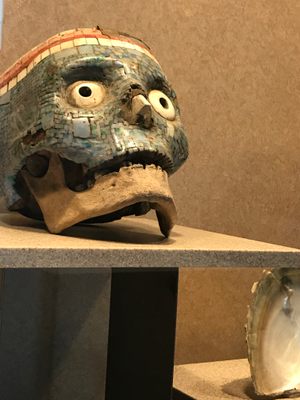About
An unusual artifact sits within Mexico City’s Museum of Anthropology. Fitted fragments of turquoise, carnelians, and white seashells cover the upper half of the skull. Pine resin binds the decor to the bone, creating a colorful mosaic.
This artifact was actually created for the museum in 1967 when the museum was searching for pieces that show how was life between the aztecs. The original artifacts made with turquoise are very rare.
Turquoise was an important commodity to many MesoAmerican cultures. It was often valued higher than gold, and its striking blue-green pigment was believed to be a sacred color of the gods.
The turquoise was sourced from the people who lived in territories the Aztecs had conquered, such as present-day Oaxaca, Veracruz, and Guerrero. Huge quantities of the mineral were sent to Tenochtitlan (now Mexico City) every year as a tribute to Emperor Moctezuma. Artisans then used the turquoise to create religious art.
Related Tags
Know Before You Go
You can find the votive skull in the Mexica gallery of the Museum of Anthropology in Mexico City. The museum is open from 9 a.m. to 7 p.m. every day except Thursdays, when it is closed to the public.
Yucatan: Astronomy, Pyramids & Mayan Legends
Mayan legends, ancient craters, lost cities, and stunning constellations.
Book NowCommunity Contributors
Added By
Published
February 22, 2019




























